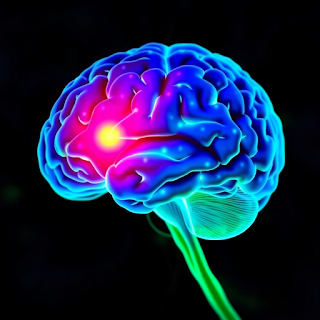Scientists are zeroing in on “criticality”—the brain’s perfect balance point—as the key to memory, learning, and even Alzheimer’s prevention
Introduction: The Delicate Balancing Act Inside Your Brain
Picture this: a brain that’s not too chaotic, not too rigid—just perfectly balanced, like a surfer riding the crest of a wave. This dynamic balance is what scientists call criticality, and it may be the sweet spot where learning, memory, and cognition flourish.
But here's the exciting twist: staying in this optimal zone might not just supercharge how we think—it could also help protect the brain from neurodegeneration, including Alzheimer’s disease.
Let’s dive into the neuroscience of this fascinating “Goldilocks zone” and what it could mean for brain health, education, and aging.
What Is “Criticality” in the Brain?
The Brain’s Tipping Point
In physics, criticality refers to the moment just before a system undergoes a major shift—like water about to boil, or a snow pile on the verge of an avalanche.
🧠 In the brain, criticality describes a dynamic state between order and chaos, where neural networks can adapt quickly, store new information, and reorganize themselves efficiently.
In simpler terms:
-
Too much order? The brain becomes rigid and slow.
-
Too much chaos? Thoughts become scattered and unstable.
-
At criticality? The brain is flexible, alert, and primed to learn.
🔗 What is neural criticality? (Frontiers in Systems Neuroscience)
Why Criticality Matters for Learning and Memory
Brain Waves, Firestorms, and Synaptic Flow
Recent research from the Max Planck Institute for Brain Research (2024) found that brains operating near criticality have improved memory recall and faster learning. That’s because at this point, neural avalanches—bursts of brain activity—are finely tuned, creating efficient pathways for processing and storing new information.
Imagine memory formation like building a road:
-
In chaos: Roads crumble as soon as they’re laid.
-
In rigidity: No new roads can form.
-
In criticality: Roads are built just fast and stable enough to support traffic—and grow where needed.
👉 Learn how neural avalanches support learning (Nature Reviews Neuroscience, 2024)
Can This Sweet Spot Protect Against Alzheimer’s?
What Happens When the Brain Falls Out of Balance?
One of the hallmarks of Alzheimer’s is the loss of neural complexity—the brain becomes less adaptable and efficient. A landmark 2023 study in eLife found that brains of Alzheimer’s patients tend to fall far from criticality, showing patterns of either over-synchronization or noisy disconnection between neurons.
🧠 In contrast, brains that maintained near-critical dynamics were more resistant to cognitive decline, even in older adults genetically predisposed to Alzheimer’s.
This means criticality might be a new biomarker—or even a future therapeutic target—for preventing neurodegeneration.
🔗 Critical brain dynamics in aging and Alzheimer’s (eLife, 2023)
How Can We Support Criticality in Everyday Life?
1. Sleep Like It Matters (Because It Does)
Sleep is one of the few times the brain naturally re-balances itself. During deep non-REM sleep, neural circuits reset and move back toward criticality.
💤 Why sleep restores brain balance – NIH
2. Keep Learning—At Any Age
Novelty and learning keep neural networks flexible. Taking up new skills (languages, music, even juggling!) can promote critical-like dynamics in the brain.
3. Mindfulness & Meditation
Mindfulness isn’t just trendy—it’s neuro-protective. Studies show that meditation encourages mid-range brain synchrony, linked to criticality and improved executive function.
🧘 Meditation and critical brain states – Neuroscience News, 2024
4. Nutrition for Neuroplasticity
Diets rich in omega-3s, polyphenols, and antioxidants (like the Mediterranean diet) support synaptic health and reduce inflammation—both crucial for maintaining the brain’s sweet spot.
Future Frontiers: Can We Train Our Brains Into Criticality?
Researchers are already exploring neurofeedback tools and AI-driven brain simulations to help nudge brains back toward criticality. Imagine a future where we could detect early Alzheimer’s signs—not with a painful biopsy, but with a simple brain scan measuring balance and complexity.
Some scientists even suggest we may one day develop “criticality-enhancing drugs” to keep the brain agile as we age.
Final Thoughts: Balance Is the Brain’s Superpower
The brain is not a machine—it’s a living, breathing ecosystem that thrives on dynamic balance. Criticality is the state where creativity, memory, and resilience are at their peak.
It’s the difference between a symphony and a noise storm… between insight and confusion… between aging with grace and fading away.
And the best part? We’re just beginning to understand how to support and harness this powerful brain state—one that could redefine how we learn, age, and live.
References
-
Beggs, J. M., et al. (2023). “Neural criticality and cognitive function.” Frontiers in Systems Neuroscience.
-
Zimmern, V. (2024). “Criticality as a biomarker for cognitive resilience in aging.” Nature Reviews Neuroscience.
-
Liu, Y., et al. (2023). “Brain dynamics and Alzheimer’s disease.” eLife.
-
National Institutes of Health (NIH). “Sleep’s role in restoring neural homeostasis.” (2024)
-
Neuroscience News. “Meditation pushes the brain toward criticality.” (2024)











Comments
Post a Comment